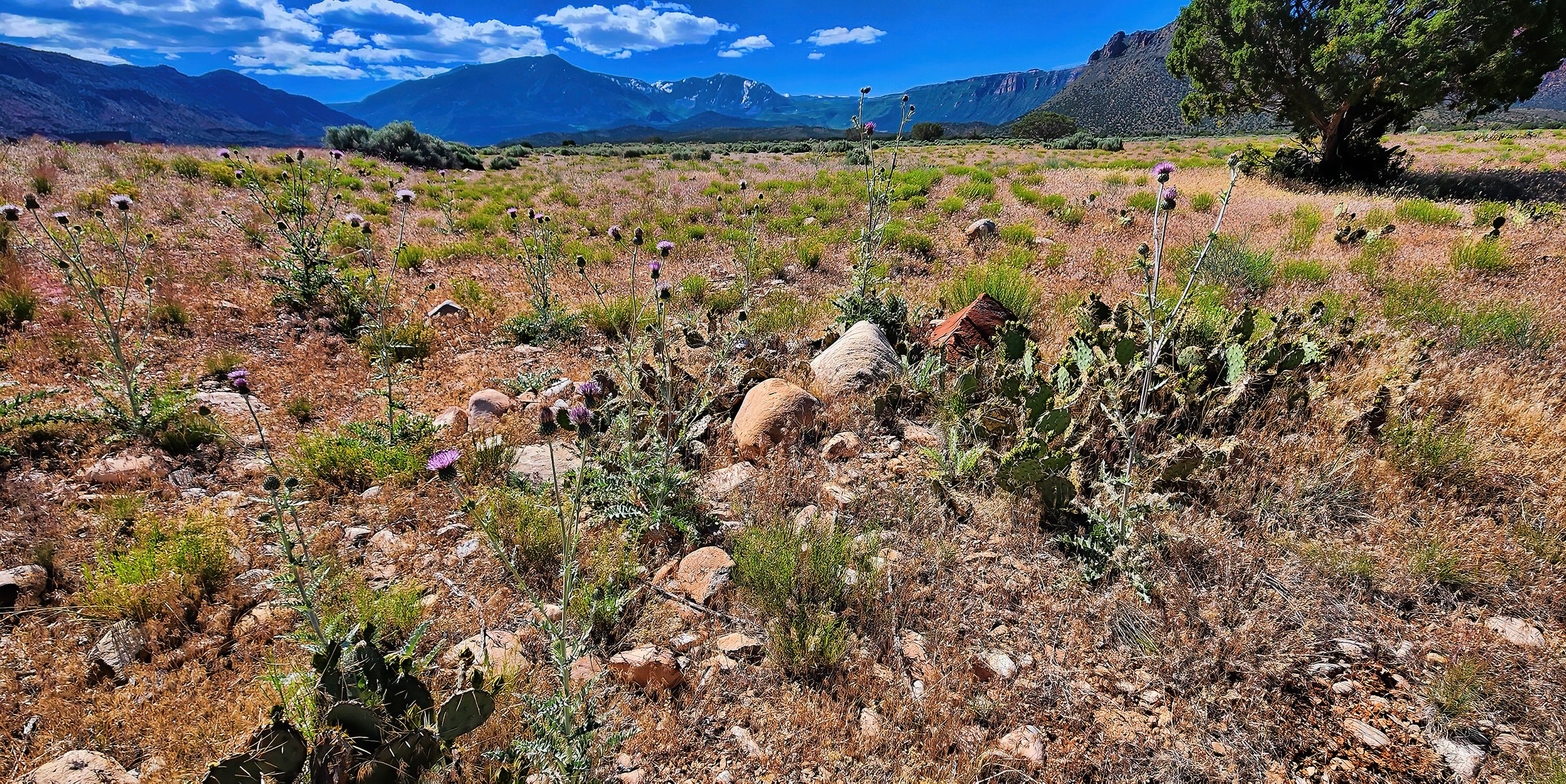slowly drifting across Porcupine Rim today.
Warming in the early sunshine...
this small, non-venomous bullsnake was extended across the trail this morning. It’s even smiling for this snapshot.
Bullsnake (Pituophis catenifer sayi).
These beautiful blue birds...
continue to hang out at the feeding stations, much to my delight.
Breeding male Lazuli Bunting (Passerina amoena).
A quick re-shoot...
was necessary for the final edit of a video volume of original narrative poetry by local Rory Tyler. We got out early this morning in the cool soft light of dawn in Castle Valley.
This dapper Spotted Sandpiper...
is keeping a watchful eye on junior, as the fledging juvenile explores along the banks of the Colorado River early this evening.
Spotted Sandpiper (Actitis macularius).
Alfalfa is on the menu...
this evening for Bugs Buddy. Constantly entertaining.
Desert cottontail (Sylvilagus audubonii).
The Pace homestead in Castle Valley, Utah...
was settled circa 1920 by John and Ann Pace.
A napping Flammulated Owl...
no larger than a soda can. Caught catching a little shuteye on my neighbor’s patio chair on a shaded porch. Quite tiny. And enormously cute.
Flammulated Owl (Psiloscops flammeolus).
The best view in the canyon lands...
in the greater Moab area is at Dead Horse Point State Park. Change my mind.
A low-cost solar mini-fountain...
is the latest gadget I’ve acquired in service of my feathered friends. If the Sun is up, the fountain is spouting!
Forests of stamens...
topped with millions of anthers producing trillions of pollen particles in countless wildflowers during this season’s super bloom in the high desert is really hammering my allergies. It’s been quite miserable this year, especially if one likes to breathe freely.
Macro image of prickly pear cactus blossom showing the stigma (green bulb in center) surrounded by hundreds of stamens consisting of anthers at the tips of each filament. Amazing micro universe when one gets small.
Subterranean bee hive under construction...
by the engineering globe mallow bee (Diadasia diminuta) that collects pollen from the globemallow flower that is presently at peak bloom in Castle Valley. It’s quite fascinating to watch their activities, if one has the time and patience.
Vertical tubular “turrets” serve as entrances to the underground hive. The tallest seen here on the right is 1.25 inches (3.2 cm) high.
The inside diameter of the turrets is about 4 mm, but it appears that the subterranean part of the entrance to the hive is slightly larger in size.
Early stages of turret construction after the initial burrow entrance has been excavated. The bees gather finer-grained particles from the ejected material from their diggings and cement the turret with their saliva.
Bee applying saliva to the upper rim of the turret to cement small particles as the turret rises.
Part of the neighborhood still under construction. Note the freshly dug shallow burrow at the far left without a turret.
Fully loaded pollen bags on the hind legs of the globe mallow bee returning to a fully completed part of the hive.
Down the hatch with a heavy load.
Wide view of a portion of the hive.
It's a bee's world...
in the blossoming cacti, and they sure are busy.
Iridescent flashes of color on hummingbirds...
are structurally controlled by layers of tiny air bubbles on the feather’s surface, refracting and reflecting various wavelengths of light. The brightness and intensity of the iridescence is also dependent on the viewer’s angle relative to the Sun, and is demonstrated by the Black-chinned Hummingbird shown below.
Like an array of miniature sundials...
casting long shadows late in the day, the ground-digging and turret-building bees are back at work in Castle Valley. I’ll follow up with some proper photography of the bees when they’re in action the next few days.
Several patches of invasive thistle...
were the target of my energies this morning. You’re welcome, Castle Valley.
Know before you dig! There are several native thistles in southeastern Utah that are utilized by mule deer and other range animals, one of which is shown below.
Cainville thistle (Cirsium calcareum).
The Colorado River discharge...
at the Cisco, Utah gaging station peaked on 19 May 2023 at about 41,000 cfs (cubic feet per second) despite the near record snowpack in the high country of Colorado this water year. It is interesting to note that last year’s peak flow of about 16,000 cfs occurred at about the same time (see hydrograph below) which strongly indicates that upstream diversions are robbing water from the main stem.
Covered with pollen particles...
a bee emerges from a prickly pear cactus blossom in the rock garden. On to the next flower, a pollinator’s work is never done.
Prickly pear cactus (genus Opuntia).
NOTE: This image was shot with a handheld 400 mm telephoto lens from a standing position. Nearly as good as a tripod-mounted macro lens close to the subject.
During an early evening ride...
I enjoyed this lovely view on the long descent back into the lower valley.
A courting pair...
of Black-chinned Hummingbirds (Archilochus alexandri).
The coquettish female hanging at the feeder.
The attentive and acrobatic male.





































